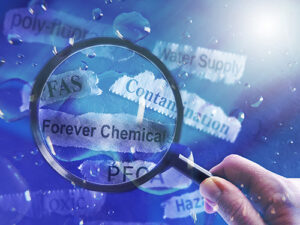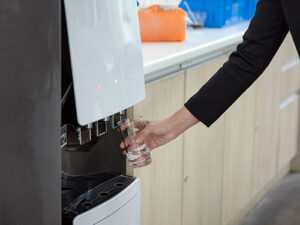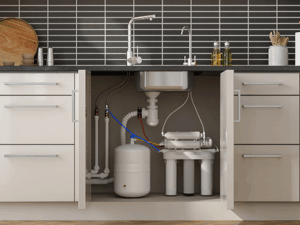The importance of clean water in Maryland is something that truly goes without saying but, at the same time, it’s not something that many homeowners think much about.
“My water looks nice and clear, so it must be clean and safe to drink.”
If you’ve ever thought this, then you aren’t alone; this goes through the heads of a lot a of Maryland homeowners, whether their water comes from a utility or a well.
But what you might not realize is that clear water isn’t necessarily clean!
In this blog post, we’ll talk about the dangers of contaminated water that you might not know about and what you can do to ensure you have clean, safe water in your home at all times.
The Dangers You Can’t See
What do you know about arsenic?
In centuries past, this poisonous element was the perfect tool for getting rid of political rivals, ornery spouses, and other enemies that a person didn’t want around because it has no smell or taste and is invisible to the naked eye.
Those qualities make it extremely difficult to detect, but the damage it can cause over time is something that shouldn’t be taken lightly. Long term or excessive exposure to arsenic can lead to a variety of health problems, like the development of diabetes and several types of cancer. It has also been attributed to heart disease and a number of other health issues.
Arsenic is naturally occurring from the erosion of natural deposits . It can also come from runoff of glass and production waste.. Because of this, homeowners on Maryland’s Eastern Shore, as well as those in Southern Anne Arundel County and Southeastern Virginia, might see elevated levels of arsenic in their ground water.
Besides arsenic, your drinking water can also contain nitrates, which are chemical units that occur naturally and are colorless, odorless and tasteless, just like arsenic. They can enter the water due to runoff from fertilizer use, sewage leaks and erosion of natural deposits.
Nitrates are especially harmful to infants and can cause Blue Baby Syndrome, which is a condition where the organs, cells, and tissues don’t receive enough oxygen.
These two contaminants alone are reason enough to make getting clean water in Maryland a priority, but how do you go about doing it?
Making Sure Your Water is Clear and Clean
If you think you might have contaminants like arsenic, nitrates, radium, lead and copper in your water, then the only way to be sure the levels aren’t excessive is to have your water tested.
If you get your water through a utility, then it is held to standards put in place by the United States Environmental Protection Agency (EPA), meaning that the levels of those contaminants are considered to be safe for consumption. Getting the water tested might still be worth consideration because standards have changed with time. And just because it is deemed “safe” you may still want to reduce the amounts of those contaminants.
If your water comes from a well, however, you’re on your own.
Because well water isn’t provided by a utility, you have no real way of telling what gets into your water without having it tested. Whatever contaminants are there could be in far larger quantities than you should be consuming!
So who should you turn to when you want clean water in Maryland?
Getting Rid of Water Contamination with Hague Quality Water in Maryland
When you want the best clean water that you can possibly get, trust Hague Quality Water of Maryland to deliver!
Hague Quality Water of Maryland offers water conditioners that can be customized to remove certain contaminants or combinations of contaminants from your well water. This, in combination with reverse osmosis and other types of filtration, can get your water as close to “pure” as you wish. You’ll get the contaminants out and have safe, clean water flowing through your home’s plumbing. Take advantage of the 25-year manufacturer’s limited warranty that you get with Hague Quality Water of Maryland’s comprehensive, customizable water conditioners and reverse osmosis systems and never worry about contaminated water again!




